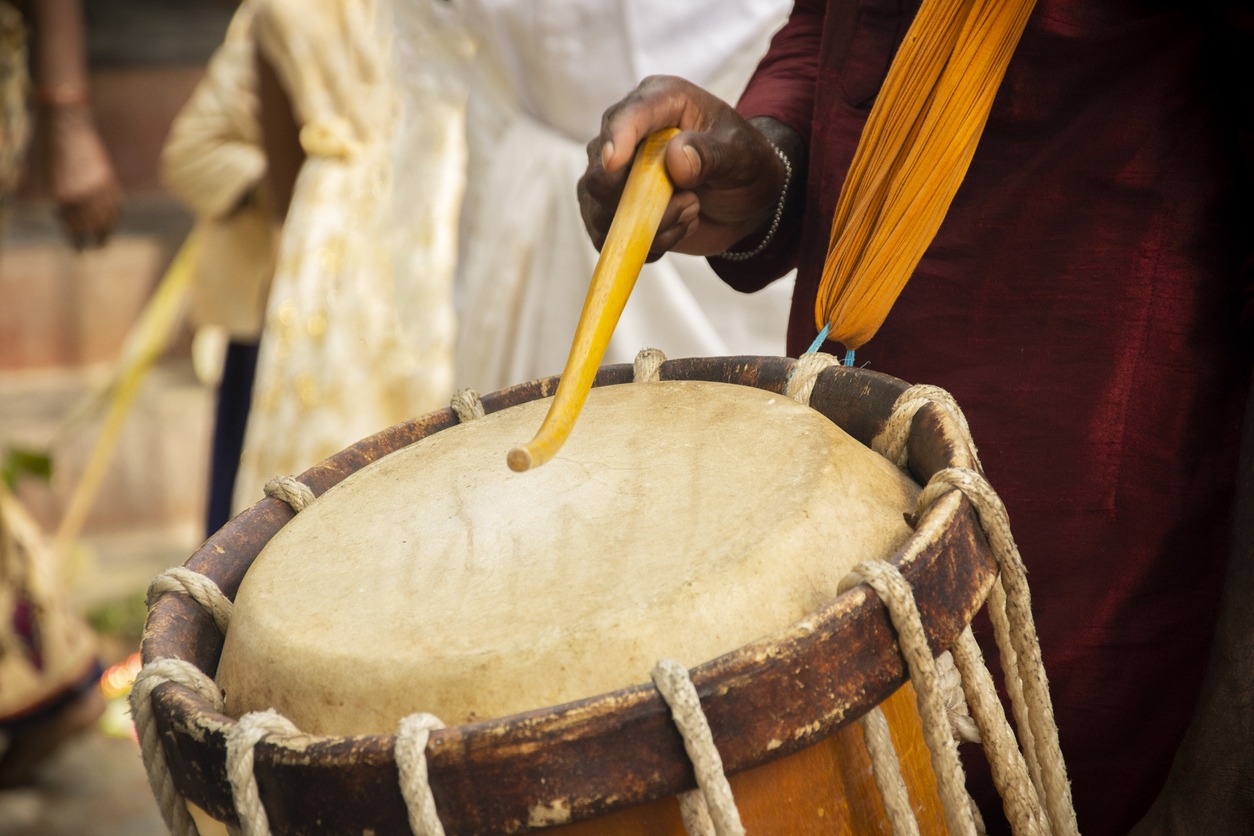The chanda, or also known as chenda, is a cylindrical musical instrument that is widely used in some regions of India, like in the state of Kerala, Karnataka, and Tamil Nadu. This percussion instrument is most commonly known for its rigid and loud sound. It has two sides, in which the left side is called Edam Thala, while the right side is called Valamthala. The left side of the chenda is traditionally made out of one or two layers of cow skin. Meanwhile, the right side, called the Valamthala, is made out of five to seven layers of skin in order to produce a bass sound. The skins that were used in making the chenda were dried in the shade and then, later on, fastened on wooden rings using a gum from the tree called ‘pananchi maram.’ These rings were made either of a palm tree or a bamboo tree.
Usually, the measurement for the chenda’s body is one foot in diameter and has a thickness of 1.5 inches. As well as that, its body is made out of the softwood of the jackfruit tree. In order to produce a highly resonating sound, the instrument’s thickness was sometimes reduced by about 0.25 inches. Also, to replace the quality of sound, the chenda’s wooden rings were replaced if it does not meet the quality of the sound. In fact, for a regular chenda player, there is an average of fifteen rings required every year.
Moreover, this cylindrical instrument is mainly played in Hindu temples, especially in festivals and religious ceremonies in Kerala. It was typically used as an accompaniment for Indian classical dance, as well as in folk dance ritual. For instance, the chenda is used in Kathakali, an Indian major form of classical dance, and in the Kannyar Kali, a folk-dance ritual that is usually performed in the Temples of villages in Chittur Taluk and Alathur in Kerala. Interestingly, the chenda is also a popular musical instrument for theatre art and in other notable ritual forms of dance worship. It is also branded as an inevitable musical instrument that is present in all forms of cultural activities in Kerala. There is a variant instrument that is quite similar to the chanda. However, this instrument called, the Asura Vadyam is deemed as a demonic instrument, which does not go in harmony.
In learning the chenda, students are taught in a traditional way. Usually, they have to practice using stone or with a thick and strong tamarind wood. Along with that is a stick that measures about twenty-nine centimeters in length and three inches in diameter. After several practices, the students can now finish learning in stone and proceed to play the real chenda. However, there are two types of chanda that are currently present in the world of music. These chandas vary in size and have different purposes in several art forms.
Veekku Chenda: The vekku chenda, also known as acchan chenda, is a type of chenda that is used as a basic rhythm. Its name is literally translated as “beating hard” in Malayam language, a Dravidian language spoken in the Indian state of Kerala. Also, this type of chenda is mostly played as the valam thala or the right head. In playing the vekku chenda, the performer hit or beat the drum’s head using a stick without rolling or twisting his/her wrist. Both of its head are usually covered with the skin of bull or ox. Most commonly, the chendas are hung from the performer’s head vertically, so it would be much easier to play or beat both sides of the drum’s head.
Uruttu Chenda: Uruttu Chenda is a type of chenda that is played as a lead in the orchestra. Sometimes, it is also called “pramanavadhya” or the leading instrument. Its name, Uruttu, means rolling in the Malayam language. Like the first chenda, the uruttu chenda is a cylindrical percussion instrument that is used widely in the state of Kerala, Tulnaad, and Karnataka in India. When played alongside the vekkhu chenda, the uruttu chenda is always the “Edam Thala” (the left head), which is made out of single soft cow skin. In playing this chenda, the artists have a particular playing style using the stick. During its first beat, the palm holding the stick will face the performer. Meanwhile, in its second beat, the same right hand used in playing will now face the opposite side, which is done through rolling the wrist.

